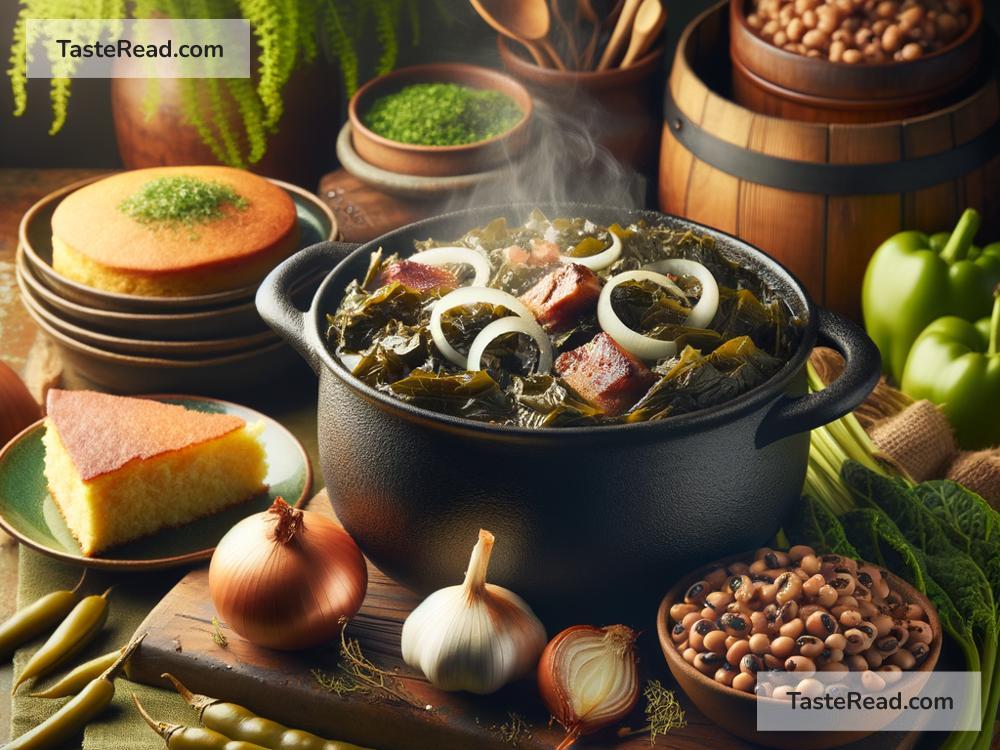The Fascinating History of Collard Greens in African American Cuisine
Collard greens are one of the most beloved dishes in African American cooking. They are more than just food; they are a symbol of survival, history, and cultural connection. These leafy, nutrient-packed greens have been on dinner tables for centuries, and their story tells us about the resilience and creativity of African Americans.
Where Do Collard Greens Come From?
Collard greens are a type of leafy vegetable that belongs to the cabbage family. Their origin can be traced back thousands of years to the Mediterranean region, where they were grown by ancient Greeks and Romans. Over time, collard greens traveled across continents to Africa, where they became a staple crop in many African diets.
In Africa, greens of various types were widely cultivated and used in cooking. Africans perfected the art of stewing greens with flavorful ingredients, creating dishes that were both delicious and nutritious. These cherished traditions crossed the Atlantic Ocean during the transatlantic slave trade, when millions of Africans were forcibly taken to the Americas. Along with their knowledge of farming and cooking, enslaved Africans brought their culinary practices with them, including their love for greens.
Collard Greens in Slavery
During slavery in the United States, African Americans endured unimaginable hardships. They were forced to work long hours in harsh conditions, often with little access to food. Plantation owners would provide enslaved people with scraps, leftovers, and inexpensive food items, leaving them to make do with whatever they could find. Despite these challenges, enslaved Africans turned humble ingredients into nourishing meals.
Collard greens became an essential part of their diet. The greens were hardy, easy to grow, and resistant to harsh weather conditions. Many enslaved people planted collard greens in small gardens near their cabins, cultivating vegetables to supplement their meager food rations. Cooking techniques from Africa were adapted to prepare greens on American soil, often stewed with water, salt, and a bit of fat for flavor.
The “Potlikker” Tradition
One of the most important parts of cooking collard greens is the broth they create, often called “potlikker” (or “pot liquor”). Potlikker is the flavorful liquid left behind after cooking the greens. This broth is packed with nutrients and flavor, making it a prized part of the dish. Leftover cornbread is often dipped into potlikker or crumbled into the bowl to soak up every last bit.
Potlikker symbolizes resourcefulness. For African Americans during slavery and afterward, using every part of the food was essential. Nothing went to waste, and even the broth became a delicacy. This tradition continues to be celebrated in African American households, connecting families to their ancestors and their culture.
Collard Greens After Slavery
After slavery ended, collard greens remained a cherished food in African American culture. During the time of segregation and systemic racism, many African Americans were limited to low-paying jobs and faced poverty. Collard greens continued to be a reliable vegetable that could be grown and prepared with simple ingredients.
As African American cuisine evolved, collard greens became a centerpiece of “soul food.” Soul food is a style of cooking that emerged in the Deep South and became closely associated with African American culture. The cuisine includes dishes like fried chicken, cornbread, black-eyed peas, sweet potatoes, and, of course, collard greens. These recipes were passed down through generations, connecting families to their history and traditions.
A Symbol of Celebration and Unity
Collard greens also hold special significance during gatherings and celebrations. They are often served at family reunions, Sunday dinners, and holidays like Thanksgiving and New Year’s Day. In African American tradition, eating collard greens on New Year’s Day symbolizes prosperity and good fortune in the year ahead. Cornbread, which represents gold, is often paired with the greens for extra luck.
This sense of unity and togetherness speaks to the role of food in African American culture. Collard greens are not just food; they are a way to bring people together, share stories, and preserve history.
Collard Greens Today
Today, collard greens are enjoyed by people of all backgrounds, but they remain a cornerstone of African American cooking. Chefs and home cooks alike continue to prepare greens in creative ways, blending traditional recipes with modern twists. New generations are discovering the rich history behind this humble vegetable and its connection to African American identity.
Collard greens are also celebrated during cultural events like Juneteenth, which commemorates the end of slavery in the United States. By serving collard greens and other soul food dishes, African Americans honor their ancestors and the resilience of their community.
A Legacy of Strength and Creativity
The story of collard greens is intertwined with the African American experience. It is a tale of strength, creativity, and connection—of turning hardship into hope. From the gardens of Africa to the kitchens of enslaved people, collard greens have traveled through history, carrying with them the flavors and traditions of a vibrant culture. Today, they remind us of the importance of honoring the past while celebrating the future.
So, the next time you enjoy a hearty bowl of collard greens, take a moment to appreciate the history behind this iconic dish. It’s not just food; it’s a legacy.


